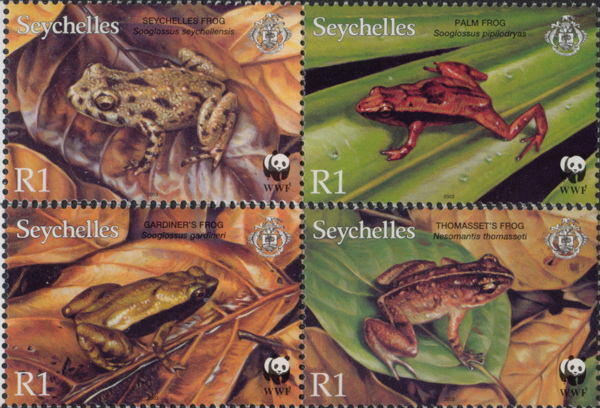Madagascar is one of the world’s hotspots for amphibian diversity, home to so many frog species that many of them don’t even have names. But soon the island may also harbor a fungus causing drastic declines – even extinctions – of frogs around the world. Ironically, the wildlife trade that’s often blamed for helping spread the disease may also give scientists a chance to prevent it. In a study recently published in PLoS ONE, researcher Jonathan Kolby, from the James Cook University in Australia, reported the first positive test for the deadly fungus in a shipment of frogs exported from Madagascar. His findings may give conservationists time to ramp up surveillance and create new strategies to keep the fungus at bay. “The global wildlife trade moves millions of animals annually, and I noticed how this created a scientific opportunity to sample a high volume and diversity of amphibians that are commonly exported to the U.S. for the exotic pet trade,” Kolby told mongabay.com.
Until now, Madagascar has remained unscathed by Batrachochytrium dendrobatidis, commonly called Bd or chytrid. Originally traced back to worldwide exports of chytrid-carrying African clawed frogs in the first half of the 20th century, the fungus has since leapfrogged around the world. Amphibians have tested positive for Bd in 56 of the 82 countries surveyed so far. Experts estimate that more than 200 species have gone extinct after these fungal outbreaks.
Amphibians pick up the fungus from contaminated water supplies or skin-to-skin contact with other infected animals. The zoospores – the free-living infectious form of the fungus – attack a frog’s skin, making it thicken and slough off. The thickened skin makes it hard for afflicted amphibians to breathe or keep a healthy balance of fluid in their bodies. The frogs can quickly dehydrate, suffer cardiac arrest, and die. Yet, the disease doesn’t sicken all frogs. Some species don’t show any ill effects, but they can act as reservoirs that allow the infection to persist, as well as carry the fungus to new areas.
In a way, conservationists have been waiting for bad news like this.
“We already suspected that this could happen,” said Franco Andreone, chair of the Madagascar Amphibian Specialist Group. “Because the pet trade turned out to be among the easiest channels through which Bd spreads, [Kolby] had the good chance to detect chytrid in exported animals.”
To find evidence of the disease, Kolby searched for fungal DNA on skin swabs from 565 amphibians, representing nine different frog species that were exported from Madagascar directly to the U.S. He specifically chose ones that came from habitats that would be most hospitable to the fungus.
“Bd can’t survive extended exposure to elevated temperatures (above 28C/82F), nor exposure to complete drying,” Kolby said. “So habitats such as high elevation, with cool, humid forests are much more likely to allow Bd to thrive than lower elevation, hot, temporary aquatic habitats prone to seasonal drying.”
Read more at http://news.mongabay.com/2014/0411-devitt-chytrid-madagascar.html#E6Zdk…, April 14, 2014

- Log in to post comments
